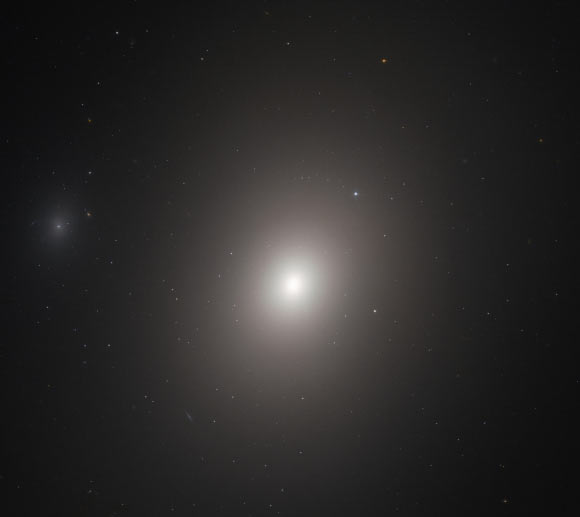Hubble Space Telescope Looks at Messier 86 | Astronomy – Sci-News.com
The NASA/ESA Hubble Space Telescope has taken a picture of the galaxy Messier 86, which is found in the constellation of Virgo.

This Hubble image shows a galaxy called Messier 86. The image is made up of observations from Hubble’s Advanced Camera for Surveys (ACS) in the optical part of the spectrum. Two filters were used to sample various wavelengths. The color results from assigning different hues to each monochromatic image associated with an individual filter. Image credit: NASA / ESA / Hubble / P. Cote et al.
Messier 86 is located 55.6 million light-years from Earth in the constellation Virgo.
Also known as M86 or NGC 4406, it is either an elliptical galaxy or a lenticular galaxy (a cross between an elliptical and spiral galaxy).
Messier 86 was discovered by the French astronomer Charles Messier on March 18, 1781.
The galaxy has a diameter of 135,000 light-years and contains approximately 3,800 globular clusters.
It is one of the brightest members of the Virgo Cluster, a collection of 2,000 galaxies that lie in the direction of the Virgo and Coma Berenices constellations.
Messier 86 is moving through space remarkably quickly — its current trajectory is bringing it in our direction, back towards the center of its galaxy cluster from the far side, at the incredible speed of 544,000 mph (875,000 kmh).
Because of the speed with which it is moving through the cluster, the galaxy is undergoing a process known as ram-pressure stripping.
The resistive material filling the gaps between individual cluster galaxies is pulling at the gas and dust in Messier 86 and stripping them out as the galaxy moves, creating a long trail of hot gas that is emitting X-ray radiation.
Astronomers are using these data to study elliptical and lenticular galaxies, both of which are often found at the centers of galaxy clusters.
By studying the cores of these galaxies, scientists hope to determine details of the central structure and to analyze both the history of the galaxy and the formation of its core.





